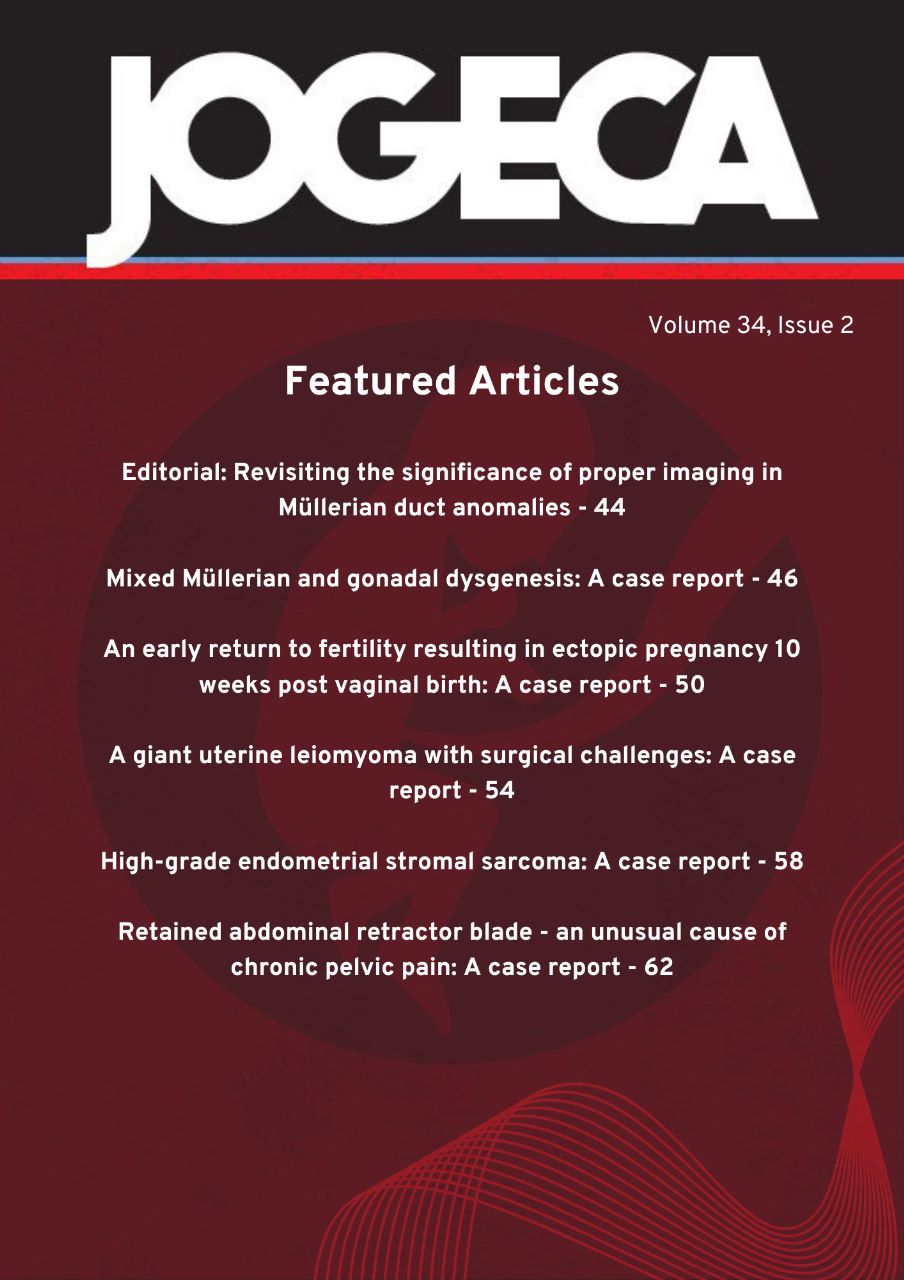Point-of-care ultrasound, today, tomorrow, and the future – the place for task sharing
DOI:
https://doi.org/10.59692/jogeca.v36i1.183Keywords:
Task sharing, Point of care, Ultrasound, ObstetricsAbstract
Background: Maternal and neonatal morbidity and mortality remain public health concerns. A study on
mortality in Kenyan hospitals found that neonates comprise two-thirds of deaths in the pediatric age
group (0–13 years). These deaths are caused by preventable conditions or those, which can be
managed better if diagnosed early, such as placenta insufficiency, placenta previa, severe fetal growth
restriction, congenital abnormalities, multiple pregnancies, and breech presentation; these can all be
identified using point-of-care ultrasound (POCUS). Obstetrical ultrasound availability is limited to level 4
and higher facilities, yet most women access lower levels of health care. Implementation of POCUS is
currently limited because of a lack of appropriate training, limited scope of practice for frontline workers,
and legal framework.
Objective: The POCUS project is being undertaken to develop national guidelines to facilitate the roll out
and scale-up of obstetrical POCUS.
Methods: A collaborative participatory approach is planned for the development of the national POCUS
guidelines. The key in this process is the identification of suitable frontline workers who, with adjustment
to their scope of practice, appropriate training, implementation of a supervision/referral system, can
undertake obstetrical POCUS and gain buy-in from regulatory bodies, the inclusion of voices of relevant
stakeholders, and leadership from government. A landscape and stakeholders analysis will also be
undertaken as part of the process of the guideline development.
Results: Narrative literature review shows that the WHO recommends effective and reliable antenatal
ultrasound services to be available to all pregnant women to optimize maternal and newborn health
outcomes and at least one ultrasound scan up to 24 weeks of pregnancy. That there are deliberate
efforts in Kenya to introduce POCUS with pilot training and implementation. Where obstetrical POCUS is
implemented, it is useful in diagnosing fetal malpresentation, placenta previa, congenital malformations,
or multiple pregnancies. Appropriate interventions, such as reduction of cesarean delivery, induction of
labor, reduction of small for gestational age, low birthweight, preterm birth, and stillbirths, can improve the
health outcome of the mother and neonate. There is a need to develop national POCUS guidelines.
Conclusions: Implementation of POCUS may be riddled with difficulties, particularly where frontline
workers’ current scope of practice may not allow them to perform such procedures, regulatory
framework, lack of knowledge, awareness, negative attitude, or behavior. The proposed guidelines will
address these barriers.
Published
How to Cite
Issue
Section
Categories
License
Copyright (c) 2024 The authors.

This work is licensed under a Creative Commons Attribution 4.0 International License.




